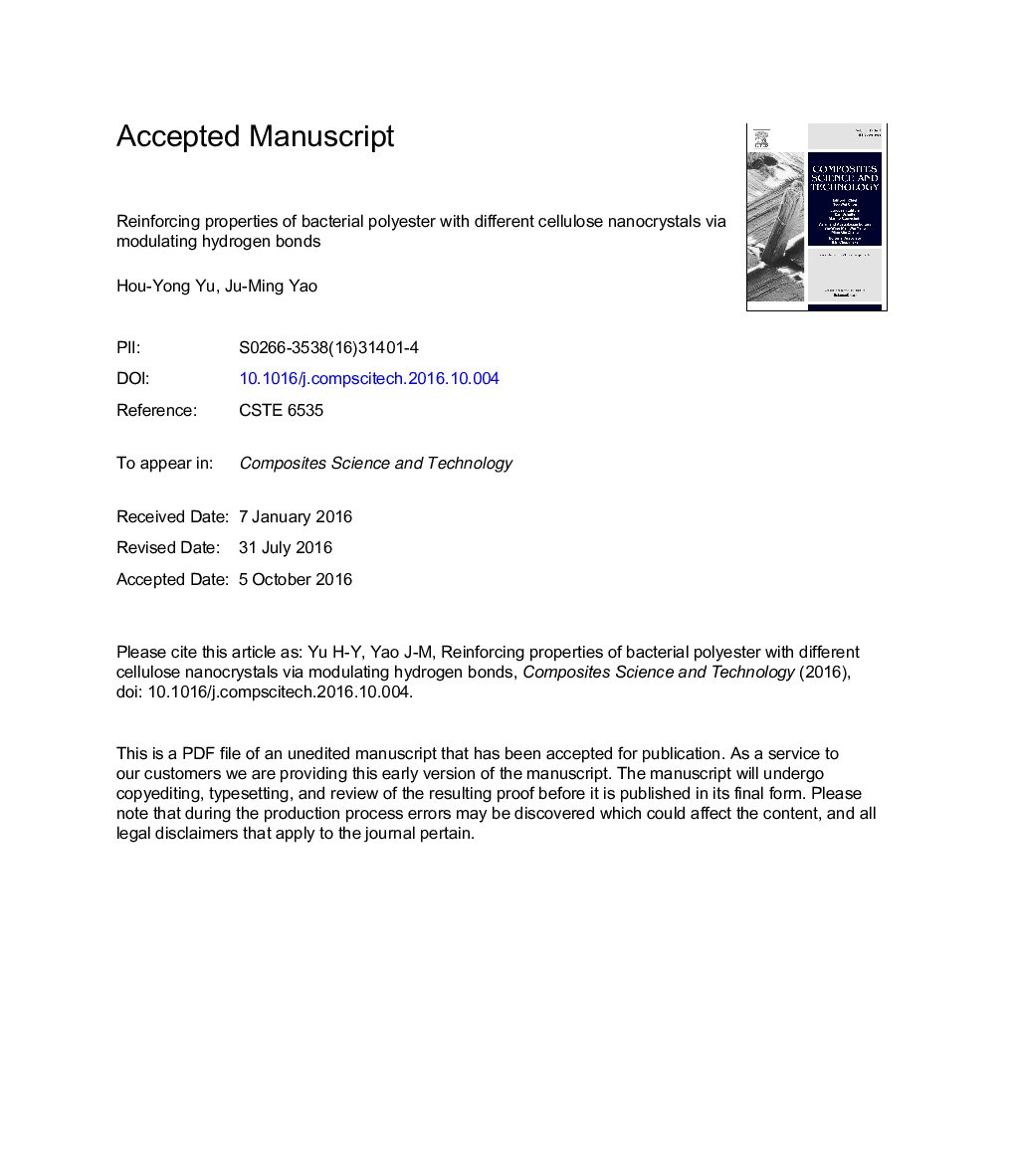| Article ID | Journal | Published Year | Pages | File Type |
|---|---|---|---|---|
| 5022414 | Composites Science and Technology | 2016 | 23 Pages |
Abstract
This work provides a direct evidence to investigate relationship between hydrogen bonding interactions and property enhancement of cellulose nanocrystals (CN) based bionanocomposites. Cellulose nanocrystal citrates (CNC) with more hydroxyl (OH) and carboxyl groups, CN and cellulose nanocrystal formates (CNF) with less OH groups were extracted from commercial microcrystalline cellulose using citric/hydrochloric acids, hydrochloric acid and formic/hydrochloric acids, respectively. Then different nanocrystals were incorporated into bacterial polyester poly(3-hydroxybutyrate-co-3-hydroxyvalerate) (PHBV) for tuning hydrogen bonding interactions and properties of PHBV nanocomposites. As expected, at the same loading contents, CNC had stronger reinforcing capability on PHBV matrix than CN and CNF. Compared to neat PHBV, tensile strengths of 10% CNF/PHBV, 10% CN/PHBV and 10% CNC/PHBV were improved by 146%, 166% and 187%, respectively. Especially, the maximum decomposition temperature of 10% CNC/PHBV was increased by 48.1 °C, and this nanocomposite showed superior barrier properties with a 64% reduction in water vapour permeability (WVP). Besides, the nanocomposites showed excellent biocompatibility to human MG-63 cells and lower overall migration levels. Such an outstanding reinforcement by CNC was ascribed to improved interfacial interaction (more hydrogen bonding interactions or hydrogen bond network), and nanodispersibility in the nanocomposites.
Related Topics
Physical Sciences and Engineering
Engineering
Engineering (General)
Authors
Hou-Yong Yu, Ju-Ming Yao,
